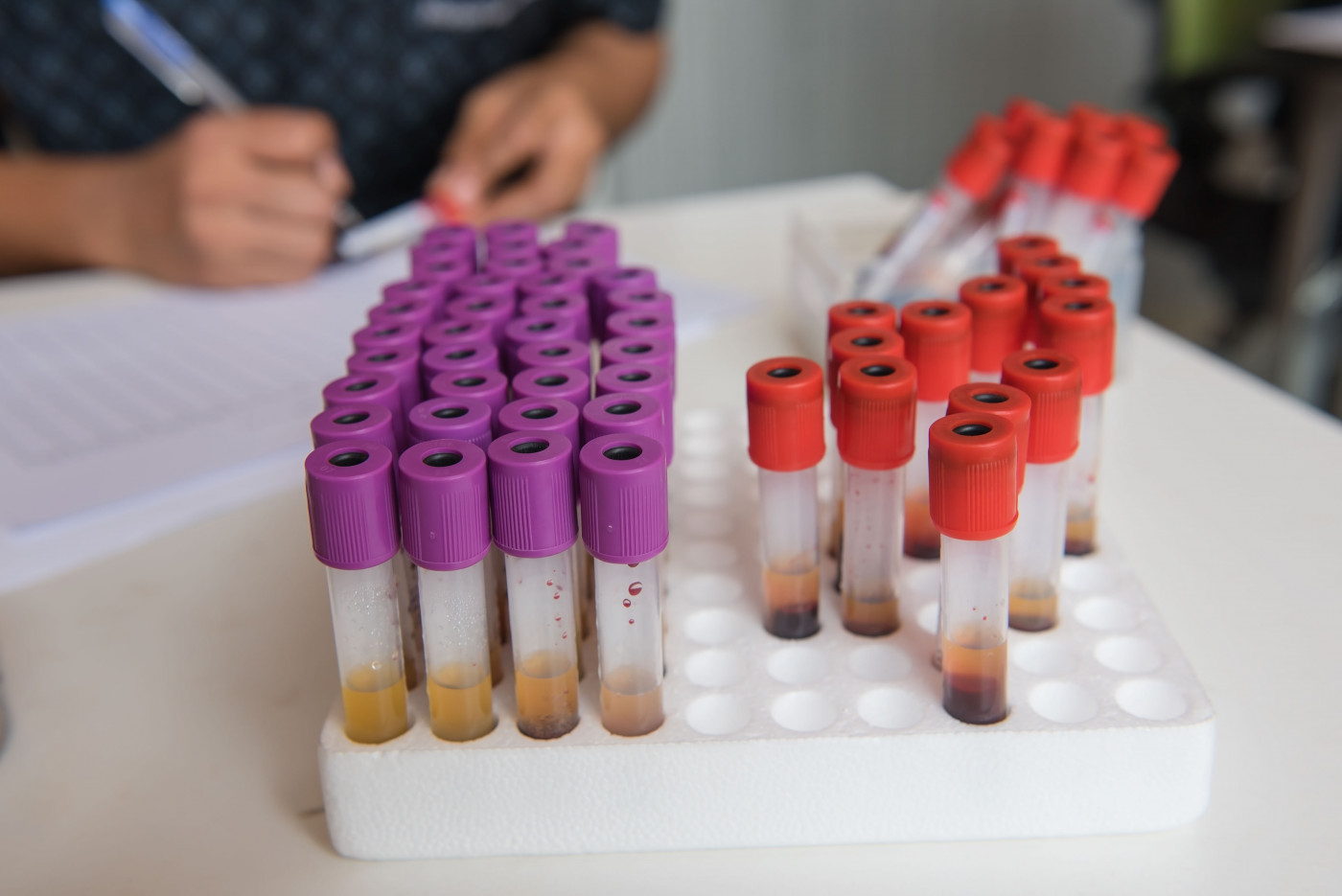GDF-15 Protein May Be Early Biomarker of Heart Disease

The levels of blood GDF-15 could detect the development and progression of heart disease in people with hereditary transthyretin (ATTRv) amyloidosis, which includes familial amyloid polyneuropathy, a new study suggests.
The study, “Plasma growth differentiation factor 15: a novel tool to detect early changes of hereditary transthyretin amyloidosis,” was published in the journal ESC Heart Failure.
ATTRv amyloidosis is caused by mutations in the TTR gene, which provides instructions for a protein called transthyretin. The mutations result in a defective protein that forms toxic deposits in tissues, mainly in the heart, nerves, and kidneys.
Patients can have a spectrum of symptoms affecting multiple organs and body systems. When they experience polyneuropathy, or nerve damage, they have a subtype of the disease called familial amyloid polyneuropathy.
ATTRv’s rarity and variable symptoms often lead to diagnostic delay and/or misdiagnosis. Prompt diagnosis matters, however, because early intervention is critical to effectively manage the disorder.
Cardiac symptoms are one of the initial changes in patients with ATTRv amyloidosis and can be detected by increased levels of the cardiac biomarkers brain natriuretic peptide (BNP) and troponin T (TnT). However, it remains unclear whether such biomarkers change with the progression of heart disease.
The growth differentiation factor 15 (GDF-15) protein is associated with cardiac stress and has been proposed as a useful biomarker of disease development and progression in people with heart disease. It also can predict prognosis in patients with another form of amyloidosis called amyloid light‐chain amyloidosis.
Researchers at Kumamoto University, Japan, now investigated whether GDF-15, BNP, and TnT levels could detect early heart changes in ATTRv amyloidosis, potentially helping patients receive treatment earlier.
The study included 32 patients with ATTRv amyloidosis (mean age 51.1 years, 53% male), eight asymptomatic TTR mutation carriers (mean age 33.6, 25% male), and eight healthy volunteers (mean age 32.0, 63% male) examined from October 2016 to May 2017.
Regarding TTR gene variants, 27 patients had the V30M mutation, two had Y114C, and the G47R, T49S, and G61L mutations were found in one patient each. In the asymptomatic TTR mutation carriers, five had the V30M variant, two S50I, and one the G47R variant.
In addition to measuring blood levels of GDF-15, BNP, and TnT, the team performed imaging studies of the heart, including echocardiogram, Tc-99m-PYP scintigraphy (a test that measures amyloid deposits in the heart) and magnetic resonance imaging (MRI), which is used to detect scarred tissue in the heart.
Results showed that blood levels of GDF-15, BNP and TnT were significantly increased in ATTRv patients in comparison with asymptomatic TTR mutation carriers and healthy volunteers. But only GDF-15 could also distinguish asymptomatic TTR mutation carriers from healthy volunteers.
In patients with ATTRv amyloidosis, GDF-15 levels significantly correlated with BNP and TnT levels, as well as C-reactive protein — a standard marker of inflammation — and with the thickening of the heart muscle, which is indicative of heart disease.
Among the 32 patients, 16 underwent PYP scans and 13 had cardiac MRI. The team found that patients who were positive for amyloid deposits in PYP scans, or positive for scarred tissue in MRI scans, had significantly higher levels of GDF-15 than those with negative findings in the scans.
However, BNP and TnT could not significantly discriminate positive from negative patients in PYP scans, and BNP also could not distinguish patients with and without heart fibrosis.
GDF-15 levels also were greater in late-onset patients, who showed positive findings in PYP and MRI scans, than in early-onset patients. Again, the findings indicated that GDF-15 levels could predict the progression of heart disease in ATTRv patients.
“We showed that plasma GDF-15 levels increased even in asymptomatic subjects with TTR mutations and in patients with ATTRv amyloidosis, whereas plasma BNP values and serum hs‐TnT values did not increase in asymptomatic subjects with TTR mutations,” the researchers wrote.
“In patients with ATTRv amyloidosis, plasma GDF-15 levels were significantly correlated with cardiac findings including plasma BNP values, serum hs‐TnT values, IVSTd, PYP findings, and cardiac MRI results,” the researchers wrote.
However, researchers noted some limitations to their findings, including that results should be confirmed in multicenter studies and that GDF-15 levels should be evaluated after treatment.
Also, researchers recognize that the prognostic value of GDF-15 in ATTRv amyloidosis should be validated to clarify its role in the disease. Lastly, it remains to be investigated whether GDF-15 levels increase in early stages of other heart diseases.
Nonetheless, the team concluded that “GDF-15 may reflect early [disease] changes of ATTRv amyloidosis.”






